theartsdesk in Budapest: Sziget to City | reviews, news & interviews
theartsdesk in Budapest: Sziget to City
theartsdesk in Budapest: Sziget to City
Fireworks, a festival, and a permanent display of Hungarian applied arts

In Budapest, when your building turns a century old, you’re invited to be part of Budapest 100, a city-wide birthday celebration-cum-open-house invitation. It’s a direct way of experiencing the applied, lived-in artistry of the city, past and present.
I’m a few blocks down Mester Utca on the south side of Pest, a half-hour walk from the city’s centre, minutes from the Danube, with a handy Spar on the corner and a restaurant complete with gratingly ersatz gypsy band within earshot. The Number 51 tram trundles by, between road rails and wires, into the early hours, and an austerely beautiful Art Deco apartment block is on the other side of the street, its upper storeys seemingly uninhabited, dark and keeping their secrets like a sphinx. It’s strikingly beautiful and spacious – built, I reckon, to the Golden Mean – with parquet flooring, high-ceiling rooms, ceramic stoves, an ancient enamelled iron bath and, to get you down to street level, an equally ancient, rickety lift, descending through some heavy-duty ornate ironwork.
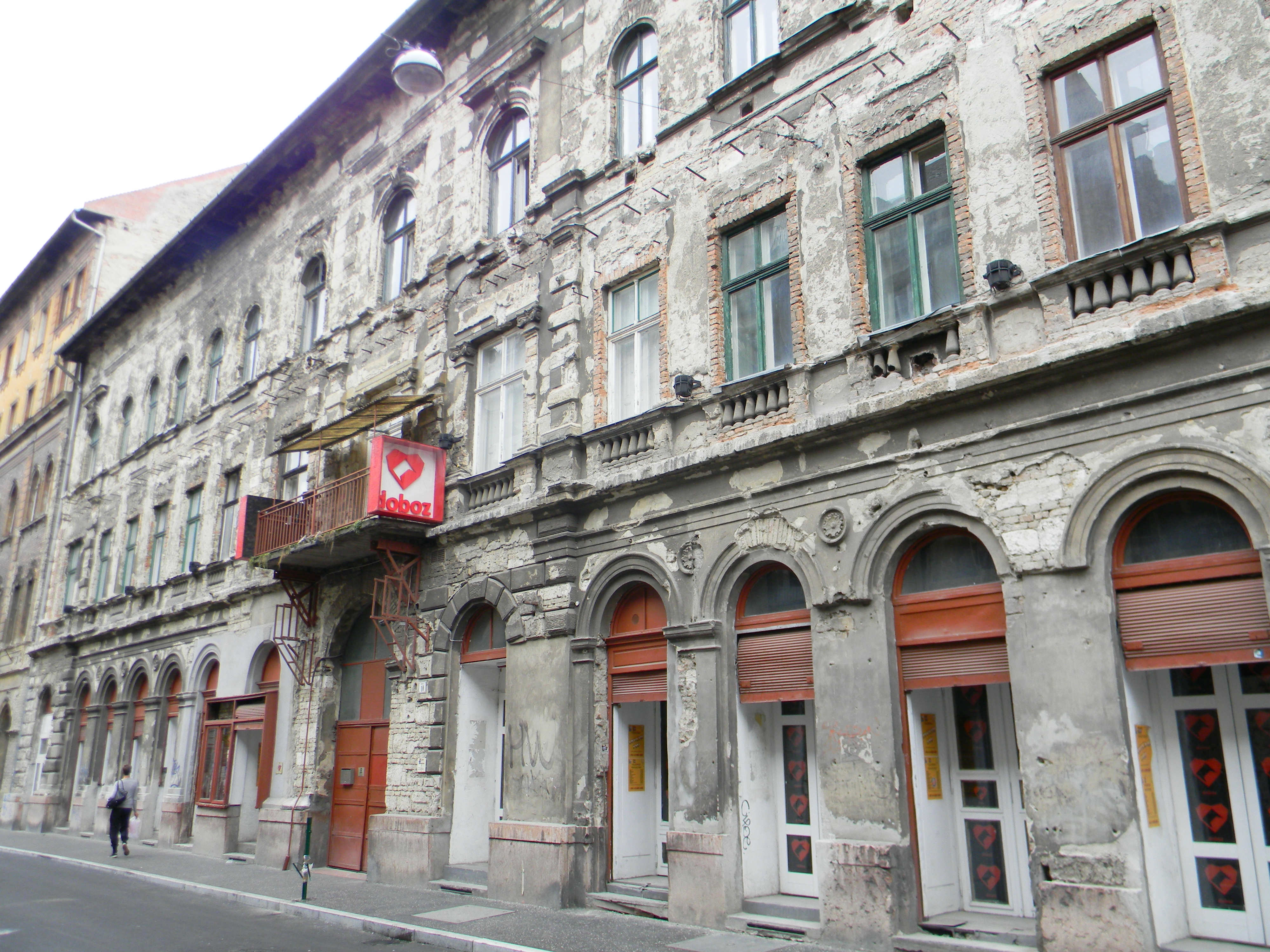 It’s this kind of applied artistry that strikes you most about Budapest. The city is a labyrinthine grid of ornate, dilapidated, beautiful mansions with incredible hidden courtyards (though it’s hard to predict when any of them are accessible), each one wildly different from the next, albeit at various levels of crumbling, Usher-like distress (pictured above right). The banking crisis hit hard, and many buildings in the centre stand empty. In recent years, however, the ruin bar phenomenon – in which enterprising hospitality entrepreneurs moved in to empty lots and buildings – has given rise to some of the best drinking establishments in Europe.
It’s this kind of applied artistry that strikes you most about Budapest. The city is a labyrinthine grid of ornate, dilapidated, beautiful mansions with incredible hidden courtyards (though it’s hard to predict when any of them are accessible), each one wildly different from the next, albeit at various levels of crumbling, Usher-like distress (pictured above right). The banking crisis hit hard, and many buildings in the centre stand empty. In recent years, however, the ruin bar phenomenon – in which enterprising hospitality entrepreneurs moved in to empty lots and buildings – has given rise to some of the best drinking establishments in Europe.
I’ve come for the last few days of the Sziget music festival; for the St Stephen’s Day fireworks on Hungary’s national holiday (20 August); and for a full immersion in to the applied arts of Budapest – it’s gorgeous Belle Epoque thermal baths, wood-panelled metro lines, grand cafes, excellent wines and the city’s signature steak dish of tenderloin and slices of goose liver. All these experiences come highly recommended.
Sziget originated in the Communist-era youth camps on Óbudai-sziget island, a large leafy retreat in the Danube a few miles north of the city centre, growing from a fan-organised gathering of 40,000 in the early Nineties to a week-long festival attracting more than 400,000 visitors this year. You get a suburban train on the Buda side of Margaret Bridge – that’s more than a half kilometre’s walk, if you fancy crossing by foot from Pest, taking in some of the finest capital city river views in Europe – and then a long, crowded trek to the festival entrance, where you get your wristband (secured with pliers and carefully examined each time you return) and parley with meticulous bag searchers and skittish little sniffer dogs before entering the site proper.
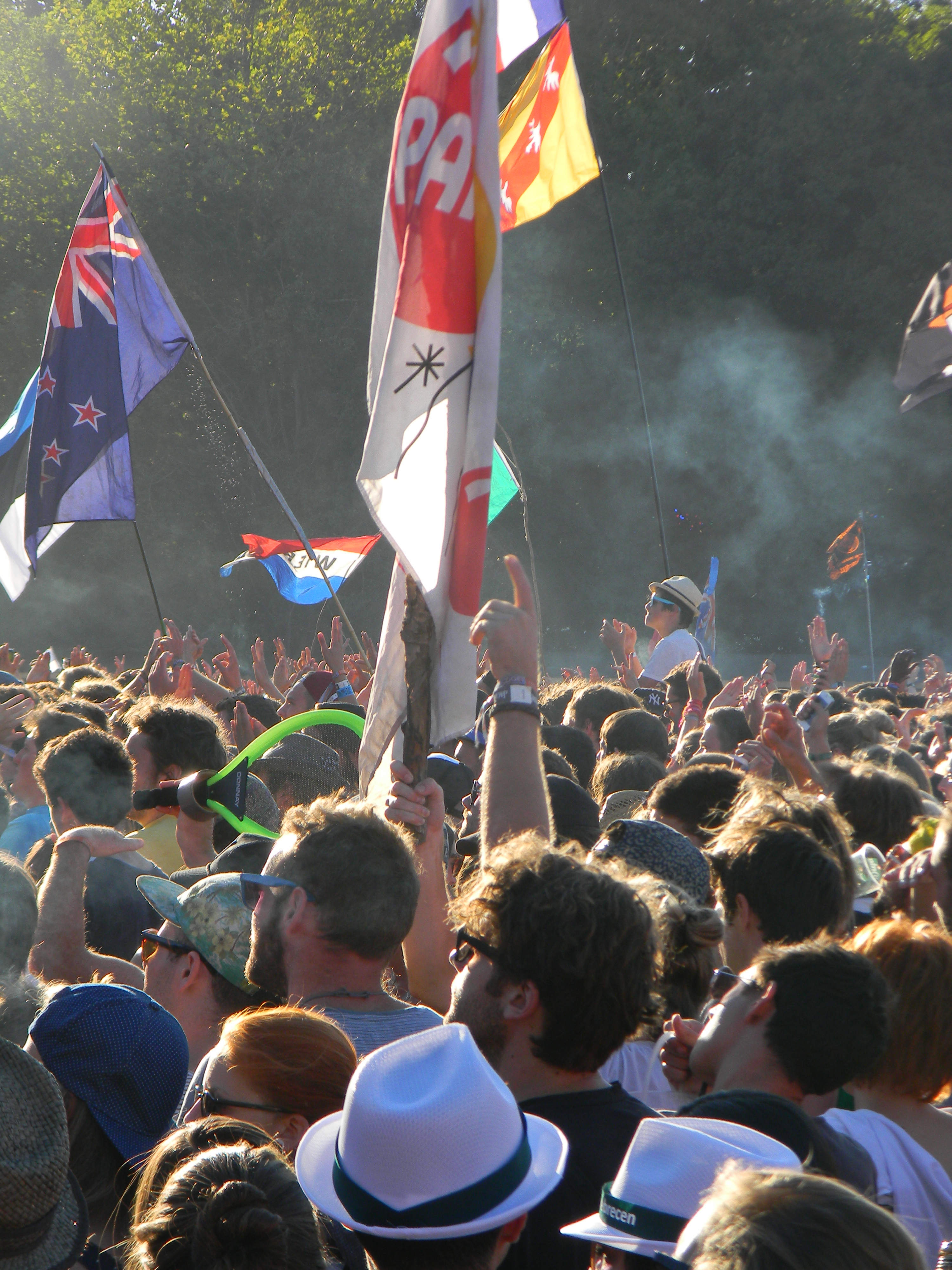 The best of the main-stage acts I see is Korn, the growling nu-metal behemoths, who execute a cover of "Another Brick in the Wall" amidst their abrasive, raging, gut-rumbling set. The music’s bass regions hit you with the physical force of bombardment, wiping the brain clean, and you feel those psychotic, stop-start rhythms hit in waves.
The best of the main-stage acts I see is Korn, the growling nu-metal behemoths, who execute a cover of "Another Brick in the Wall" amidst their abrasive, raging, gut-rumbling set. The music’s bass regions hit you with the physical force of bombardment, wiping the brain clean, and you feel those psychotic, stop-start rhythms hit in waves.
In comparison, the next night’s headliners, Prodigy, with Keith Flint’s shout-out to "my warriors in the middle" feels vaguely embarrassing and tired. The final Sunday afternoon’s headliners, The Kooks, deliver indie-rock-pop tunes to a sun-drenched crowd, while Outkast prove themselves adept at preparing for nonchalant close-ups on festival screen cameras, especially Andre 3000, in a "which type of stereo are you" top and a peroxide wig version of Liam Gallagher’s hair circa 1994. The audience swells to overflowing for Calvin Harris and his backing tracks. It’s like gorging on the musical equivalent of gummy bears studded with Es, a back-to-toddlerhood sound for meaty grown-ups prepared to a strict algorithmic formula.
Elsewhere, the A3 stage is set under one of the largest tent structures I’ve ever seen. I wandered around with half an ear to La Roux’s austere 1980s synth pop and half an ear to the structure’s interesting acoustic feedback, a ghost reverb best heard in front of the neon bar sign at the back. Earlier, I dropped in on a two-man electronic act – no idea who – but without the correct chemical stimulation, it’s hard to stay focused on two skinny bald men bobbing around behind trestle tables full of hardware. Some of the sound was gut-rumblingly effective but after a few bars, that repetitive, four-square thud – the beat of a cop on ketamine – drains remaining interest.
I split for the World stage, graced earlier in the week by Bessekou Kouyate, Yasmine Hamdan, and Terekaft. The closing Sunday had a superb set from Hungarian band Sondorgo, a Mitteleuropean version of Spain’s Radio Tarifa. The gypsy bands on the bill tended to disappoint – dull, rocked-up fusions with kit drums and guitars – the synth-pop Menele of Romania would have been preferable. The separate Hungarian folk stage has gone, and the audience numbers are low, though it’s an enthusiastic crowd.
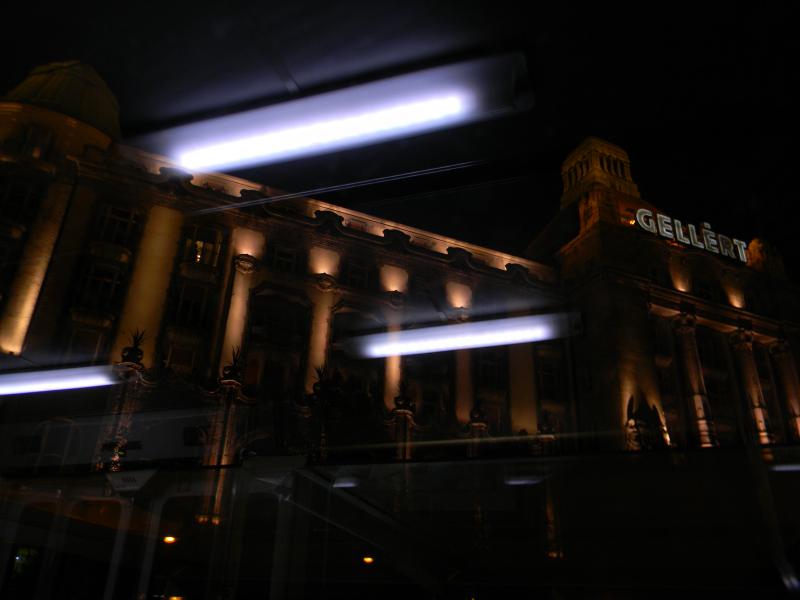 Sziget is a civilised experience to wend your way through, however packed it gets around the main stages. Pricey, though. You don’t spend hard cash here; you buy a festival card with which to consume your beers, spritzers, cocktails, schnitzels, fries and sausages. It feels a world away from the city, though it’s only a few stops down the line, and I was glad to get back on the Number 6 tram over Margaret Bridge on the last night to watch the city slide by in a burst of heavy rain as the tram trundled down the epic ring road leading to József Körút Utca (pictured above: Gellert Baths)
Sziget is a civilised experience to wend your way through, however packed it gets around the main stages. Pricey, though. You don’t spend hard cash here; you buy a festival card with which to consume your beers, spritzers, cocktails, schnitzels, fries and sausages. It feels a world away from the city, though it’s only a few stops down the line, and I was glad to get back on the Number 6 tram over Margaret Bridge on the last night to watch the city slide by in a burst of heavy rain as the tram trundled down the epic ring road leading to József Körút Utca (pictured above: Gellert Baths)
Budapest is packed with museums in interesting buildings of all kinds – the more singular including a foundry museum in the old Ganz Ironworks in Buda, and the Museum of Electrical Engineering housed in a 1930s electricity sub-station. The huge Museum of Fine Arts on Heroes Square is a splendid palace of a building, and though I failed to locate the Caravaggio (“We have the friends of Caravaggio," an attendant told me, gesturing vaguely), I did find a beautiful Piero della Francesca, the incredible Esterhazy Madonna by Raphael, and some fine Manets.
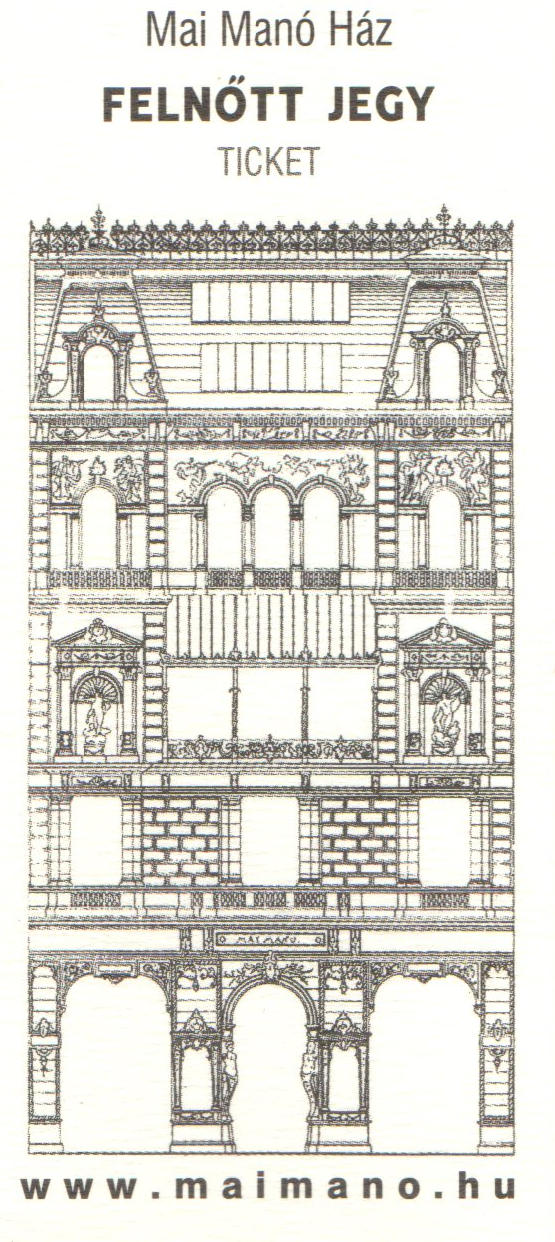 If you get the M1 metro – the world’s second oldest underground line, and one of its most beautiful – from Hosok Tere to Oktogon, and take a walk down the upmarket shopping street of Andrassy, you’ll find the Magyar House of Photographers (elegant ticket pictured). The building itself is gorgeous, and on its second floor you can rest in what was once a turn-of-the-century photographer’s studio, with exquisite painted backdrops of town and city vistas at each end of the room, and huge windows onto the architectural riches of Nagymezo Utca.
If you get the M1 metro – the world’s second oldest underground line, and one of its most beautiful – from Hosok Tere to Oktogon, and take a walk down the upmarket shopping street of Andrassy, you’ll find the Magyar House of Photographers (elegant ticket pictured). The building itself is gorgeous, and on its second floor you can rest in what was once a turn-of-the-century photographer’s studio, with exquisite painted backdrops of town and city vistas at each end of the room, and huge windows onto the architectural riches of Nagymezo Utca.
It’s this sense of applied artistry meshing with daily life that stands out in Budapest. The famous Szechenyi baths, the Gellert, and opulent Ottoman baths such as the Király and Rudas are rightly celebrated city institutions. The waters of the Szechenyi were a bit murky on my visit – too many Sziget festival-goers in need of a good wash – but the Gellert’s waters were sublime. Sinking into 40-degree pools under vaulted Belle Epoche ceramics, then padding off to the steam room, or to the terrace with its wave pool and thermal bath beside another steam room with a cold-water barrel set beside it, is a prerequisite experience for any visitor.
An alternative to bathing or museum-going, and in order to plunge the strata of the city’s past, browse the flea market at the bottom of Klauzel Utca, a two-floor establishment in the old Jewish quarter, selling communist-era collectibles fronted by a window display of the most grotesque dolls ever cast in rubber. Nearby stands the huge synagogue, and it is around here that the ruin bar phenomenon sprang up. There is currently a thriving pop-up bar/restaurant scene running between Andrassy and Kiraly Utca.
For the more classic charms of the Belle Epoche, the New York Café on József Körút is a sensory riot of rococo opulence, cocktails, cake and hot chocolate. The Gerbaud, on the heavily touristed Vorosmarty, sells its own artisan chocolates, and is a more refined, subdued if colossally grand affair.
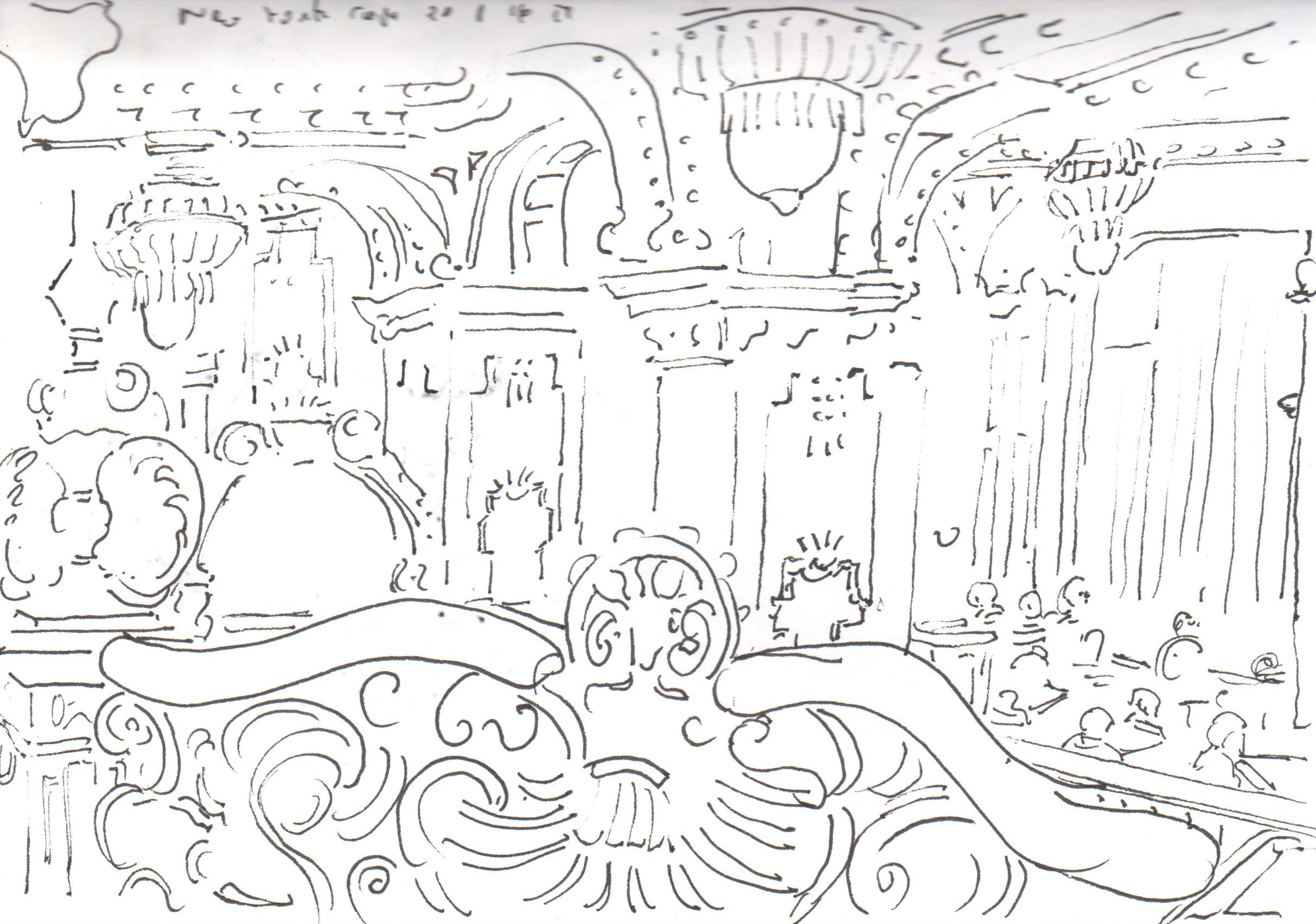 To get above even all that, take the chair lift into the Buda Hills. Being supremely relaxed in regards to health and safety, you’re mainly among Hungarians on the 15-minute ride up and down in a metal two-seater with an iron safety rail over your lap that you can lift away at any time, should you wish to. And while the rule of the Ottomans is long gone, Budapest’s Turkish presence remains in the modest form of gyros shops – that’s kebabs to us – which are ubiquitous here. An expat friend who works in hospitality steered us to a Kurdish place off Bakats Ter, a leafy square with a grand Victorian church dedicated to St Francis of Assisi on the edge of Ferencváros. One of the best chicken shawarmas I’ve ever had cost me about 500 Forints, that’s £1.50. If you’ve blown your wad on thermal baths, grand cafes, and metro fines (ALWAYS get a ticket), then come here to fill your stomach on 21st-centry Hungarian street food culture of the most authentic kind. And as you’re walking away, do remember to keep your eyes open for the trams, and don’t forget to look up.
To get above even all that, take the chair lift into the Buda Hills. Being supremely relaxed in regards to health and safety, you’re mainly among Hungarians on the 15-minute ride up and down in a metal two-seater with an iron safety rail over your lap that you can lift away at any time, should you wish to. And while the rule of the Ottomans is long gone, Budapest’s Turkish presence remains in the modest form of gyros shops – that’s kebabs to us – which are ubiquitous here. An expat friend who works in hospitality steered us to a Kurdish place off Bakats Ter, a leafy square with a grand Victorian church dedicated to St Francis of Assisi on the edge of Ferencváros. One of the best chicken shawarmas I’ve ever had cost me about 500 Forints, that’s £1.50. If you’ve blown your wad on thermal baths, grand cafes, and metro fines (ALWAYS get a ticket), then come here to fill your stomach on 21st-centry Hungarian street food culture of the most authentic kind. And as you’re walking away, do remember to keep your eyes open for the trams, and don’t forget to look up.
The future of Arts Journalism
You can stop theartsdesk.com closing!
We urgently need financing to survive. Our fundraising drive has thus far raised £33,000 but we need to reach £100,000 or we will be forced to close. Please contribute here: https://gofund.me/c3f6033d
And if you can forward this information to anyone who might assist, we’d be grateful.

Subscribe to theartsdesk.com
Thank you for continuing to read our work on theartsdesk.com. For unlimited access to every article in its entirety, including our archive of more than 15,000 pieces, we're asking for £5 per month or £40 per year. We feel it's a very good deal, and hope you do too.
To take a subscription now simply click here.
And if you're looking for that extra gift for a friend or family member, why not treat them to a theartsdesk.com gift subscription?
more New music
 Album: American Railroad Silkroad Ensemble with Rhiannon Giddens
American railroad history retold in a song cycle
Album: American Railroad Silkroad Ensemble with Rhiannon Giddens
American railroad history retold in a song cycle
 Interview: Roy Haynes, Jazz Drumming Giant (1925-2024)
The jazz legend reminisces, from Satchmo to Metheny
Interview: Roy Haynes, Jazz Drumming Giant (1925-2024)
The jazz legend reminisces, from Satchmo to Metheny
 Album: Dolly Parton & Family - Smoky Mountain DNA - Family, Faith & Fables
Forlorn hope, and a beautiful expression of family, from the American heartland
Album: Dolly Parton & Family - Smoky Mountain DNA - Family, Faith & Fables
Forlorn hope, and a beautiful expression of family, from the American heartland
 Amyl and the Sniffers, O2 Academy, Birmingham review - rowdy Aussies let loose
Melbourne pub rockers set Sunday evening alight
Amyl and the Sniffers, O2 Academy, Birmingham review - rowdy Aussies let loose
Melbourne pub rockers set Sunday evening alight
 Album: Tomorrow X Together - The Star Chapter: Sanctuary
From heavenly pop to reggaeton heat, TXT's musical universe knows no bounds
Album: Tomorrow X Together - The Star Chapter: Sanctuary
From heavenly pop to reggaeton heat, TXT's musical universe knows no bounds
 Music Reissues Weekly: The Yardbirds - The Ultimate Live at the BBC
New ways to see this most significant of British bands
Music Reissues Weekly: The Yardbirds - The Ultimate Live at the BBC
New ways to see this most significant of British bands
 Le Vent du Nord, Cecil Sharp House review - five extraordinary musicians
Joie de vivre, thanks to a bracing wind from Canada
Le Vent du Nord, Cecil Sharp House review - five extraordinary musicians
Joie de vivre, thanks to a bracing wind from Canada
 Album: Garfunkel & Garfunkel: Father and Son
Art for Art's sake
Album: Garfunkel & Garfunkel: Father and Son
Art for Art's sake
 Tucker Zimmerman, The Lexington, London review - undersung old-timer airs songwriting excellence
Rare and welcome appearance from superb octagenarian American singer-songwriter
Tucker Zimmerman, The Lexington, London review - undersung old-timer airs songwriting excellence
Rare and welcome appearance from superb octagenarian American singer-songwriter
 Album: Primal Scream - Come Ahead
The Scream finally knock out the album we’ve been hoping for
Album: Primal Scream - Come Ahead
The Scream finally knock out the album we’ve been hoping for
 Album: Alley Cat - The Widow Project
Enter a haunted factory and quiver in the shadows with a dubstep auteur
Album: Alley Cat - The Widow Project
Enter a haunted factory and quiver in the shadows with a dubstep auteur
 Bob Vylan, O2 Institute, Birmingham review - self-proclaimed most important band in the UK blow the roof off
Political punk-rappers see the weekend out with a bang
Bob Vylan, O2 Institute, Birmingham review - self-proclaimed most important band in the UK blow the roof off
Political punk-rappers see the weekend out with a bang

Add comment